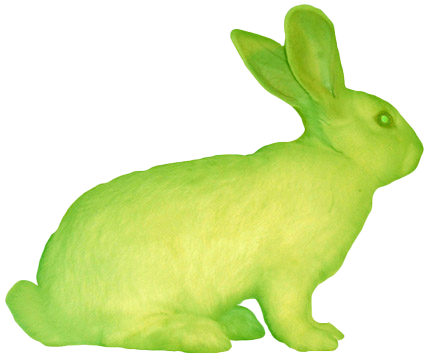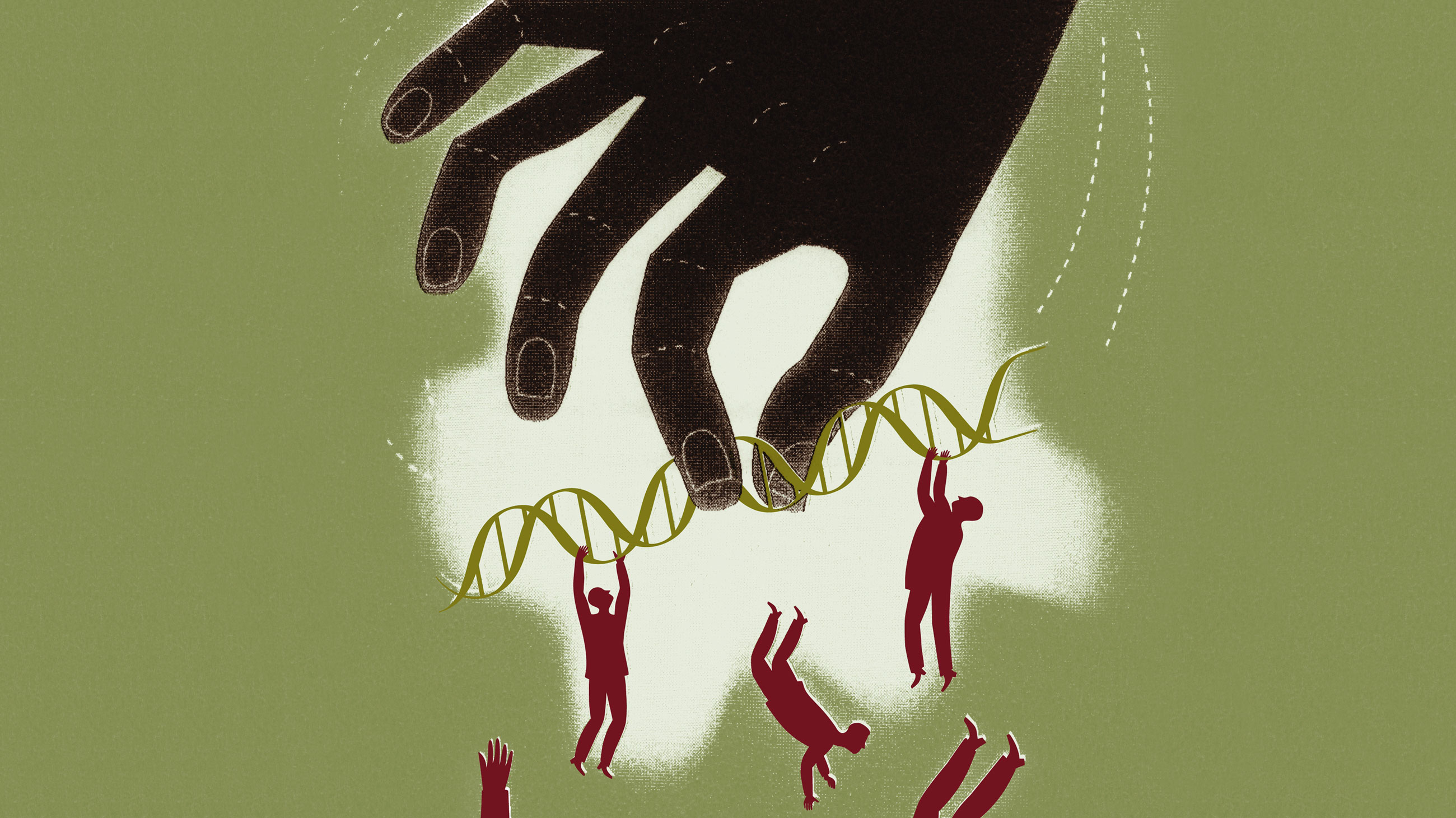Week 6 | BioTech + Art
Though life as a medium of artwork seems controversial, Professor Vesna has shown examples of artwork appropriated by society that involves genetic engineering. Named by Eduardo Kac as "transgenetic art", his alba bunny, AKA GFP bunnies, consists in the creation of a "fluorescent rabbit through molecular biology" ("GFP Bunny"). Mainstream media has allowed such art shows to hold under supervision. Kac's show was even held at UC Davis in 2016. To avoid any ethical or moral confrontation, the school published claims in one of its articles about the attitude towards genetic artwork: “This must be done with great care, with acknowledgment of the complex issues thus raised and, above all, with a commitment to respect, nurture and love the life thus created” (Jones).
Life as a medium of art is not easy to deal with. Professor Vesna states, "[Genetic Artwork] are grounded in very serious and complex understanding of biologic and genetic issues that are part of our contemporary society" ("5 BioArt pt2", 3:22). Here two points are stressed. First, it requires highly technically sophisticated knowledge of biology and genomes to first be able to work on such projects. Secondly, life as an artwork itself is a criticism to modern contemporary society. As Zaretsky the bioartist says, "Instead of phobic reaction, I am attempting to critically embrace the processes of life's permanent and inheritable alteration. New reproductive strategies are opening the doors to rapid evolutionary trends, nationalized, racialized, popular and corporate." By embracing the natural possibility of genetic modification, Zaretsky bravely draws more ambiguous ethical boundary between life and bio-artworks.
Yet controversy still stands. BioArt has faced scrutiny and received criticism due to concerns about the lack of ethical oversight. According to a USA Today report, animal rights groups have accused artists like Kac of exploiting animals for personal gain, while conservative groups have raised moral objections to the use of transgenic technologies and tissue culturing.
Image/Video citations:
Kac. GFP Bunny, www.ekac.org/gfpbunny.html. Accessed 13 May 2023.
“Adam Zaretsky: Transgenic Humans as Bioart.” YouTube, 3 Oct. 2017, www.youtube.com/watch?v=bgRkqh2DFLY.
“Genetic Engineering and Society (GES) Center.” Jason Delborne Addresses CRISPR Gene Drives Controversy in NYTimes, Quanta, and Gizmodo, research.ncsu.edu/ges/2017/11/jason-delborne-addresses-crispr-gene-drives-controversy-nytimes-quanta/. Accessed 13 May 2023.
Sources:
Vesna, Victoria. “5 BioArt pt2” Bruin Media Reserve, uploaded by UC Online, https://bruinlearn.ucla.edu/courses/160989/pages/unit-6-view?module_item_id=5946338
Pasko, Jessica M. "Bio-artists use science to create art." USA Today, 5 Mar. 2007.
“GFP Bunny.” GFP Bunny, www.ekac.org/gfpbunny.html. Accessed 13 May 2023.
Jones, Dave “The Arts (and Science): The ‘GFP Bunny’ and A Juried Art Show.” UC Davis, 24 Jan. 2016, www.ucdavis.edu/news/arts-and-science-%E2%80%98gfp-bunny%E2%80%99-and-juried-art-show.
Zaretsky, Adam. "Biography", www.fondation-langlois.org/html/e/page.php?NumPage=264. Accessed 13 May 2023.


Hello! The point you make regarding ethical oversight for BioArt is something that I didn't think too deeply on until you mentioned it in your post. It is true that many of the art pieces that were shown in lecture involve serious genetic implications for the living animals and even plants that are modified. I do think as the field of BioArt grows and more speculation regarding the ethical nature of the art is garnered, there is an opportunity for ethic standards to be put into place.
ReplyDeleteHi. I enjoyed reading your article because of the insight you have provided into the ethics of BioArt. The concept of genetic engineering being used as a form of art raises questions about the ethical boundaries of scientific experimentation and creativity. The use of genetic modification in art can challenge our perceptions of what is natural and can have far-reaching implications for future generations. As this field continues to develop, it is important to carefully consider the moral and ethical consequences of using living organisms as a medium for artistic expression. Ultimately, the debate surrounding genetic art highlights the complex relationship between science, art, and society.
ReplyDeleteHi!
ReplyDeleteI thought your blog this week was phenomenal. Your argument on the ethical oversight for BioArt is extremely valid! There are simply some who are suitable to contribute to the discussion of the considerations of each experiment (professionals of the field) than others. I also shared a similar perspective in my blog!